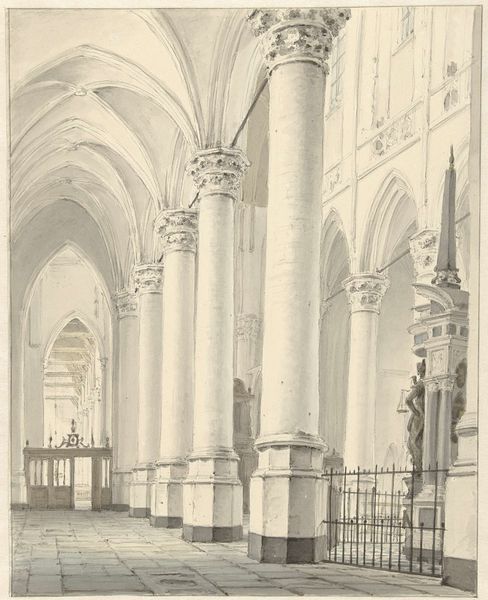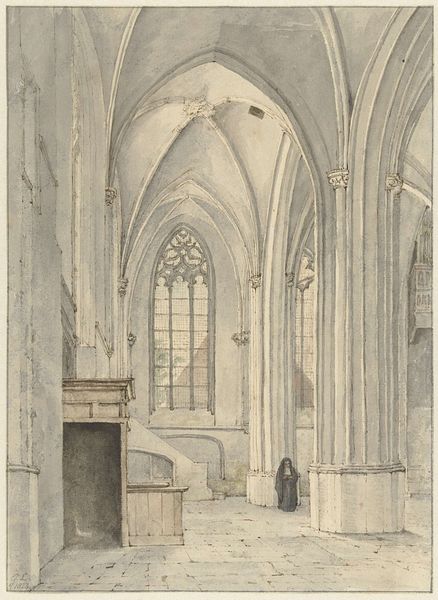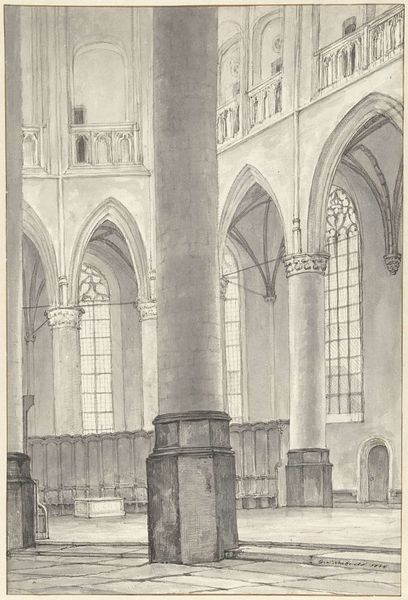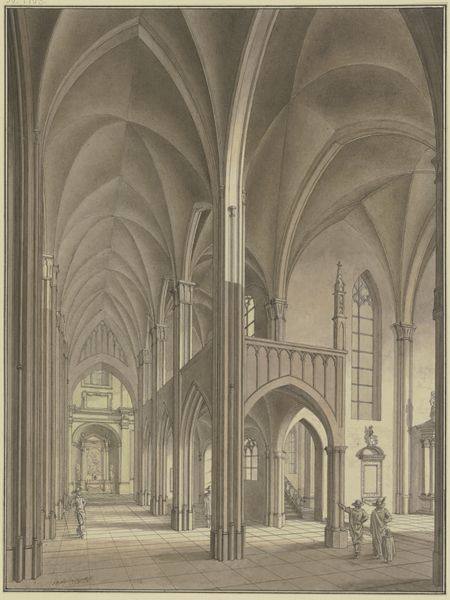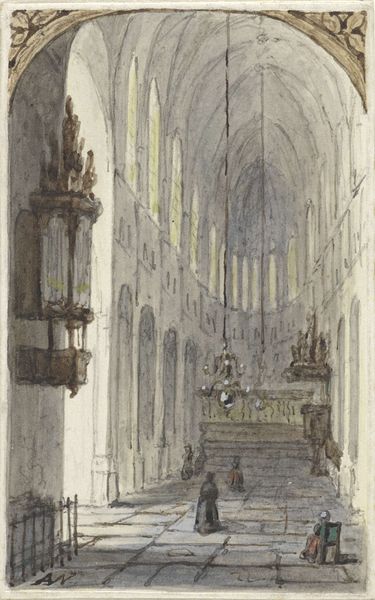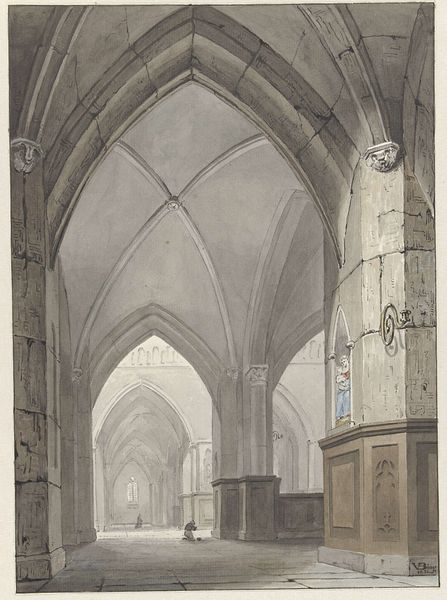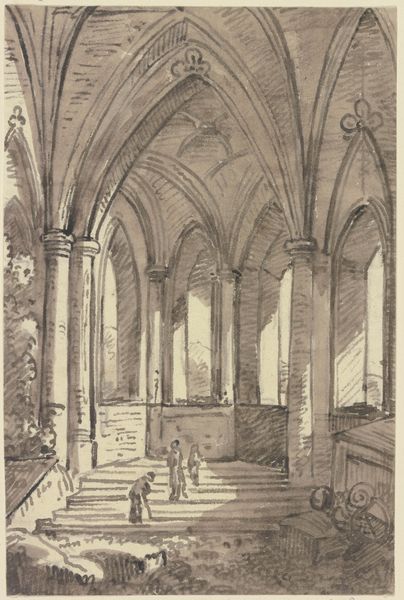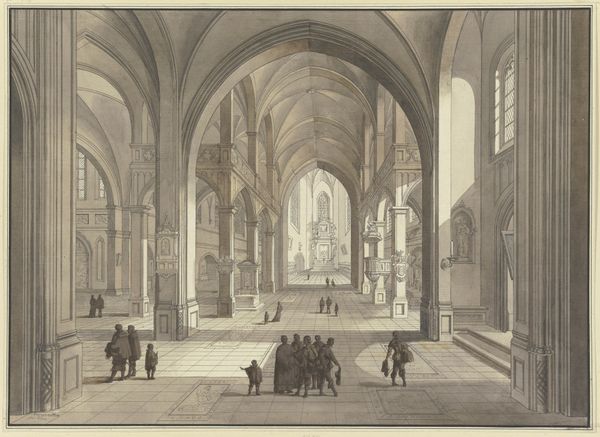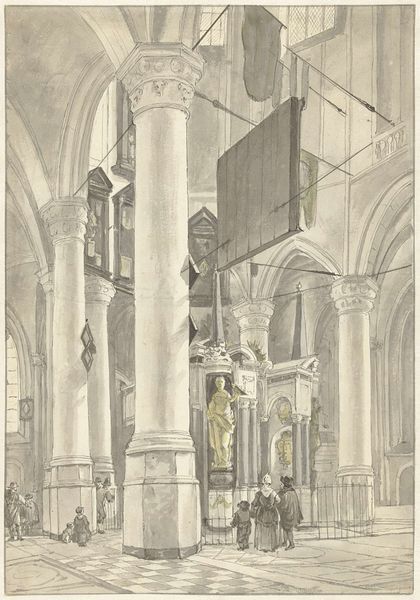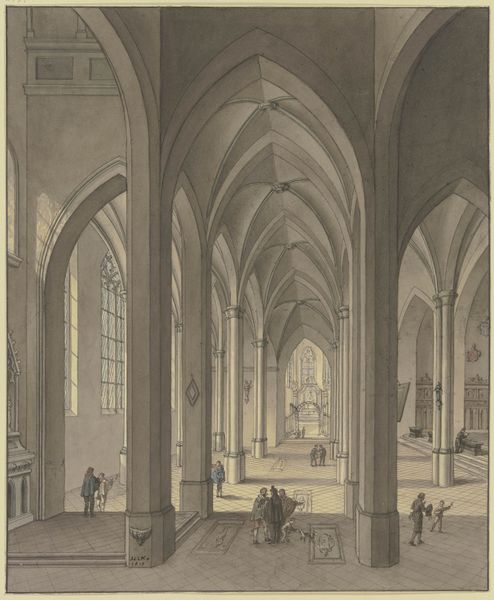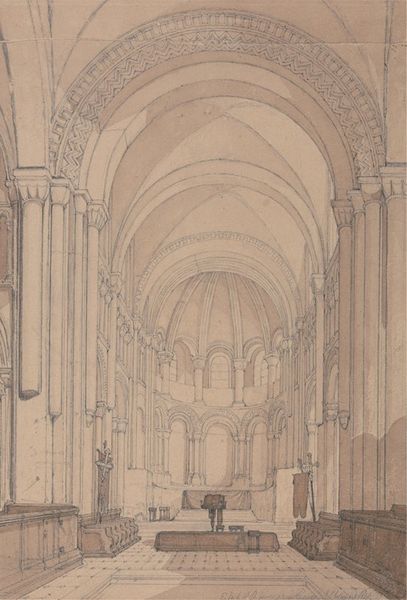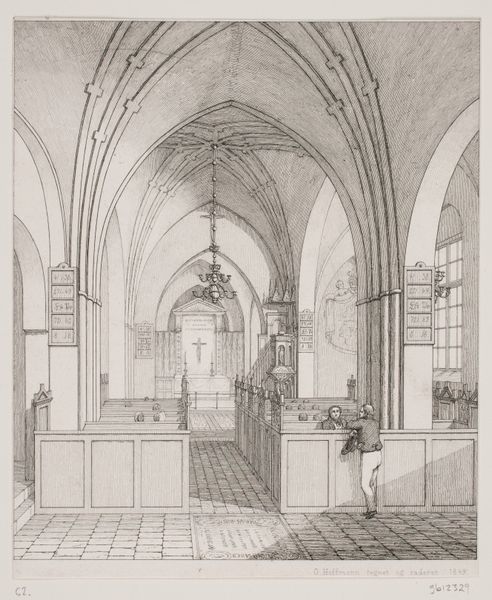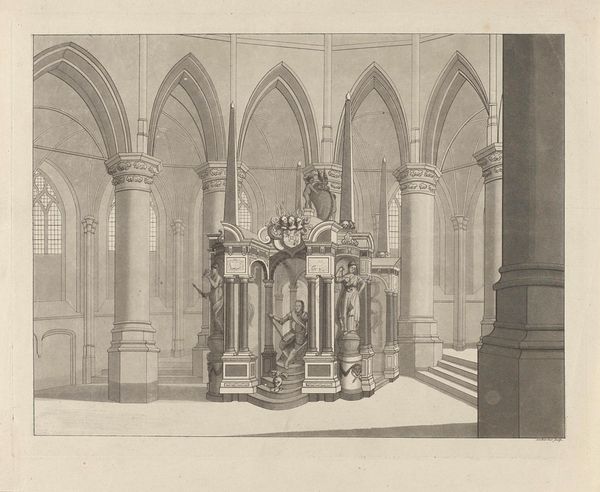
drawing, paper, ink, pencil, graphite
#
portrait
#
pencil drawn
#
drawing
#
medieval
#
pencil sketch
#
landscape
#
perspective
#
charcoal drawing
#
paper
#
ink
#
pencil drawing
#
pencil
#
line
#
graphite
#
pencil work
#
realism
Dimensions: height 497 mm, width 371 mm
Copyright: Rijks Museum: Open Domain
Curator: Jelgerhuis' "Interior of the Nieuwe Kerk in Delft," rendered in 1824, presents a cavernous church interior with meticulous detail using pencil, ink and graphite on paper. The lines defining the space and form draw us into the scene with the aid of perspective. Editor: Immediately, I'm struck by how calm it feels, despite the massive scale of the building. It is almost weightless as a space. The figures add a sense of grounded reality against all of the soaring, upward lines. Curator: The means of production are key here. Notice the economy of line, the subtle gradations achieved through graphite. This wasn't about creating an illusionistic spectacle but rather about a careful transcription, or almost a cartography of space, captured on a portable piece of paper. Consider it within the rising Dutch bourgeois, creating artwork for the new consumer. Editor: Cartography… yes, that makes me think about intention versus reception, almost like an architect laying bare a drawing of their future creation; it is technical in intention but aspirational and ethereal in practice. Curator: It reflects the social standing, I feel. Religious spaces during this period became representations of both communal wealth and emerging power. The church then exists as both site and symbol. Editor: Absolutely, especially how the architectural elements, those columns, arches, emphasize a sort of… aspirational climb to transcendence that speaks directly to societal structures. And speaking of materiality, the coolness of the stone in the drawing practically makes me feel cold! Curator: Yes, that coldness hints at the economics of religious institutions during this era. The materials themselves—stone, light, shadow—translate into value, defining how patrons, or just the local populations, experience and engage with religious and temporal power. Editor: Fascinating. It is like you have presented the framework and meaning for what could only previously be considered simply awe-inspiring or visually intimidating at first. Thanks. Curator: And for you, it provided the sense that the structure, though drawn realistically, could float if it wanted to. We complement one another well!
Comments
No comments
Be the first to comment and join the conversation on the ultimate creative platform.
